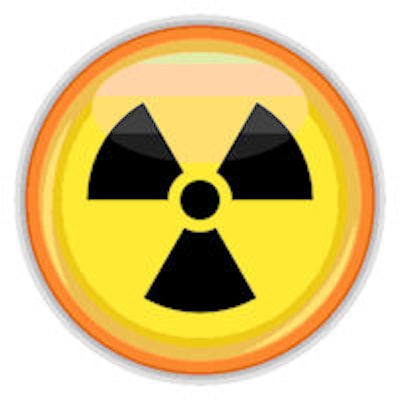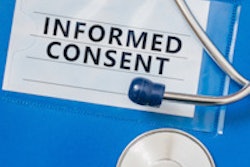
Because of the dose-dependent risk of inducing future cancer, it's essential to use the correct language in patient information leaflets for CT and x-ray, according to new research from a leading U.K. facility.
At last week's U.K. Radiological Congress (UKRC) in Liverpool, Andrea Shemilt, from the R&D Imaging Support Unit, Department of Radiation Physics, Queen's Medical Centre Campus, Nottingham University Hospitals, gave four practical tips for effective communication of risk from ionizing radiation:
- Declare all procedures and their purpose
- Articulate the level of radiation risk and what the risk is
- Give a risk comparator in easily understood terms
- When conducting research, identify which procedures are standard care and which are additional
Following these steps is central to obtaining proper informed consent and adhering to the principles of transparency, quality, and delivery of healthcare, Shemilt noted, who cited the following example of a well-written patient information sheet for research:
Your study doctor will explain the risks of having a CT performed ... You may have more scans by taking part in the study than you would under routine clinical management of your cancer ... CT scans will expose you to ionizing radiation (x-rays). There is a risk that exposure to ionizing radiation will lead to cancer later in life after a delay of several years for leukemias and many years for solid tumors. The amount of ionizing radiation you receive will depend on how long you are in the study for and which areas of your body are scanned. The risk of a new fatal cancer developing in a healthy 40-year-old from the maximum amount of ionizing radiation in this study is approximately 1 in 66. However, this risk is still small compared with the normal lifetime risk of getting cancer, which is over 1 in 3, and for patients with your clinical condition the actual risk is considered to be very low.
Also, Shemilt listed two real-life examples of bad patient information:
"You will receive a low dose of background radiation from the DEXA [dual-energy x-ray absorptiometry] scan, but this is less than the natural background radiation that you might receive in eight hours." This doesn't identify which procedures are standard care and which are additional, doesn't articulate the level of radiation risk and what the risk is, and is factually inaccurate because a DEXA doesn't give you background radiation.
"In this study, you will received radiation therapy of 78 GY in 39 fractions (e.g., number of treatments) together with the CT and bone scans. The radiation therapy you will receive in this study is consistent with the amount of radiation given as a standard of care for prostate cancer." This doesn't declare all procedures and their purposes, doesn't articulate the level of radiation risk and what the risk is, and contains too much technical language and disproportionate description. In the first sentence, it should be "receive" instead of "received," she added.
It's crucial to include the right language elements and ensure the individuals concerned are fully informed in advance about the risks of the exposure, Shemilt concluded.



















